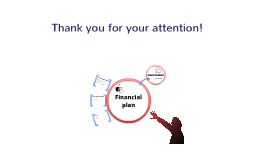DIS Financial Plan Presentation
Transcript: DIS Financial Plan Presentation Strategies for Financial Growth Short-Term Goals Long-Term Goals Short-term goals are achievable in the near future, typically within one year. They often involve building an emergency fund, paying off debt, or saving for a specific purchase. Long-term goals extend beyond five years, such as retirement planning, investing in assets, building a sustainable wealth portfolio, or establishing a charitable foundation. Setting Financial Goals Growth Opportunities Identifying growth opportunities involves assessing market trends, expanding investment portfolios, exploring new revenue streams, and leveraging emerging technologies for financial expansion. Establishing clear financial objectives is crucial for success. Short-term goals provide immediate direction, while long-term goals shape future financial stability. Risk Management Strategies Effective risk management strategies involve diversification, insurance coverage, emergency funds, and regular financial assessments to mitigate potential financial losses and uncertainties. Putting it All Together Budgeting Techniques Combining short-term and long-term goals with risk management, growth opportunities, and budgeting techniques ensures a comprehensive financial strategy for achieving financial success. Budgeting techniques encompass expense tracking, income allocation, goal prioritization, and periodic budget reviews to ensure financial discipline and effective resource management. Understanding Income Sources Plan Execution Executing the devised financial plan with precision and timeliness is essential to ensure the desired outcomes. Implementing Financial Strategies Analyzing the diverse streams of income contributing to the financial portfolio. Effective implementation of financial strategies is crucial for success in achieving financial goals. Monitoring and Adjustments Consistent monitoring of financial performance and making necessary adjustments based on real-time data lead to better decision-making and goal attainment. Primary Income Channels Diversify revenue streams to build a resilient financial foundation. Contingency Planning Evaluation Metrics Developing contingency plans for unforeseen circumstances safeguards financial stability and mitigates risks in uncertain environments. Establishing clear evaluation metrics allows for the measurement of the financial plan's effectiveness and helps in identifying areas for improvement. Passive Income Streams Future Projections Predicting future financial trends and creating projections aids in long-term financial planning and adaptability to changing market conditions. Explore opportunities for passive income to enhance financial stability and growth. Fine-tuning... Dive deep into your first point or make a new one Limit your words so your audience stays focused Use visuals to help Last checks... Expand on the bold statement above. Provide statistics, go into detail, or more — whatever works best for your presentation. Adding final touches... Thinking cap on... Polishing up... Keep your words short and punchy so your audience stays focused. Make it clear this is the end. Provide context for your audience and make it easy for them to follow. Hang on... A final point, a quote, more context — adapt the template to fit your needs. Remember that your presentation is almost done, so keep it simple.

















